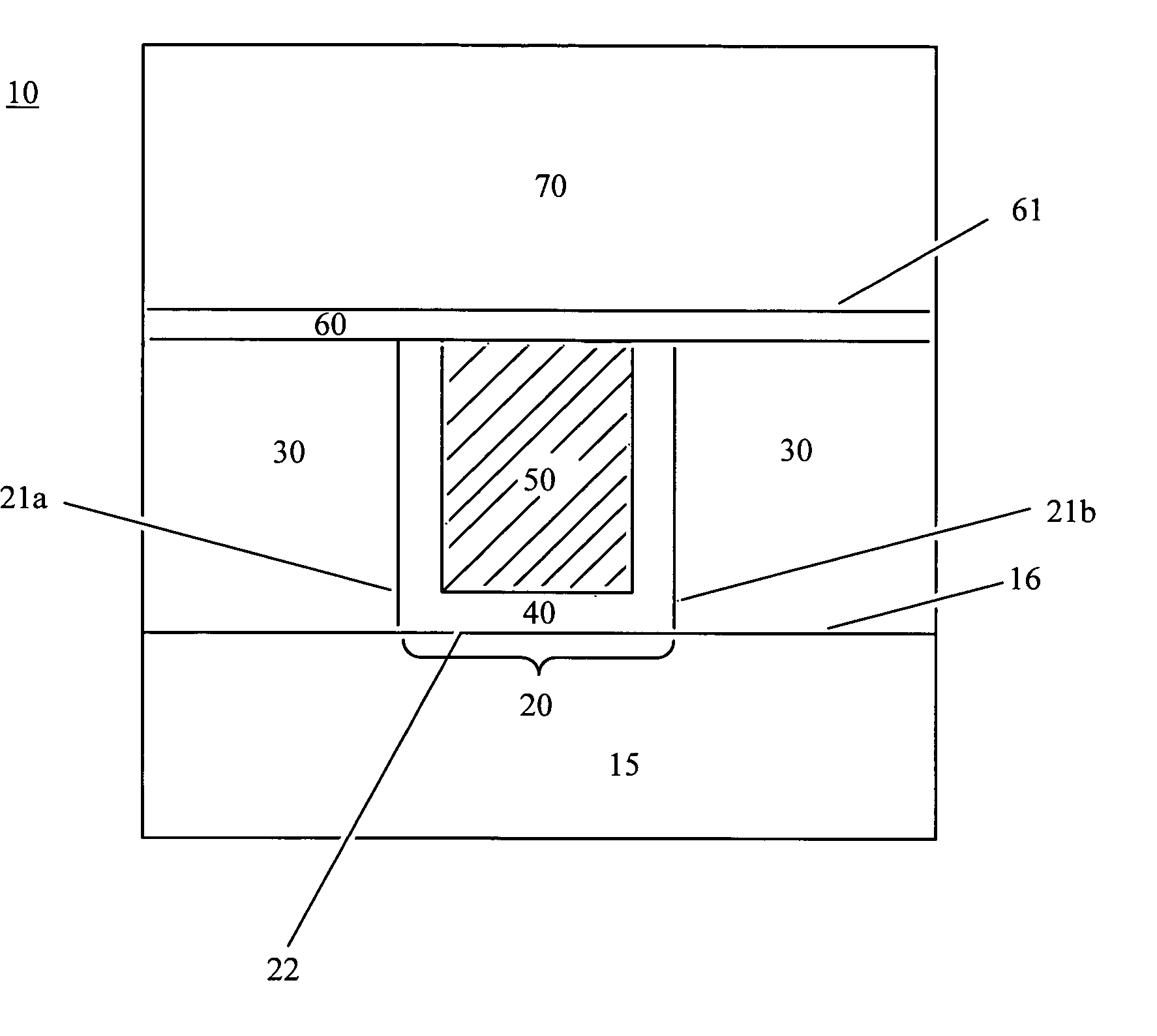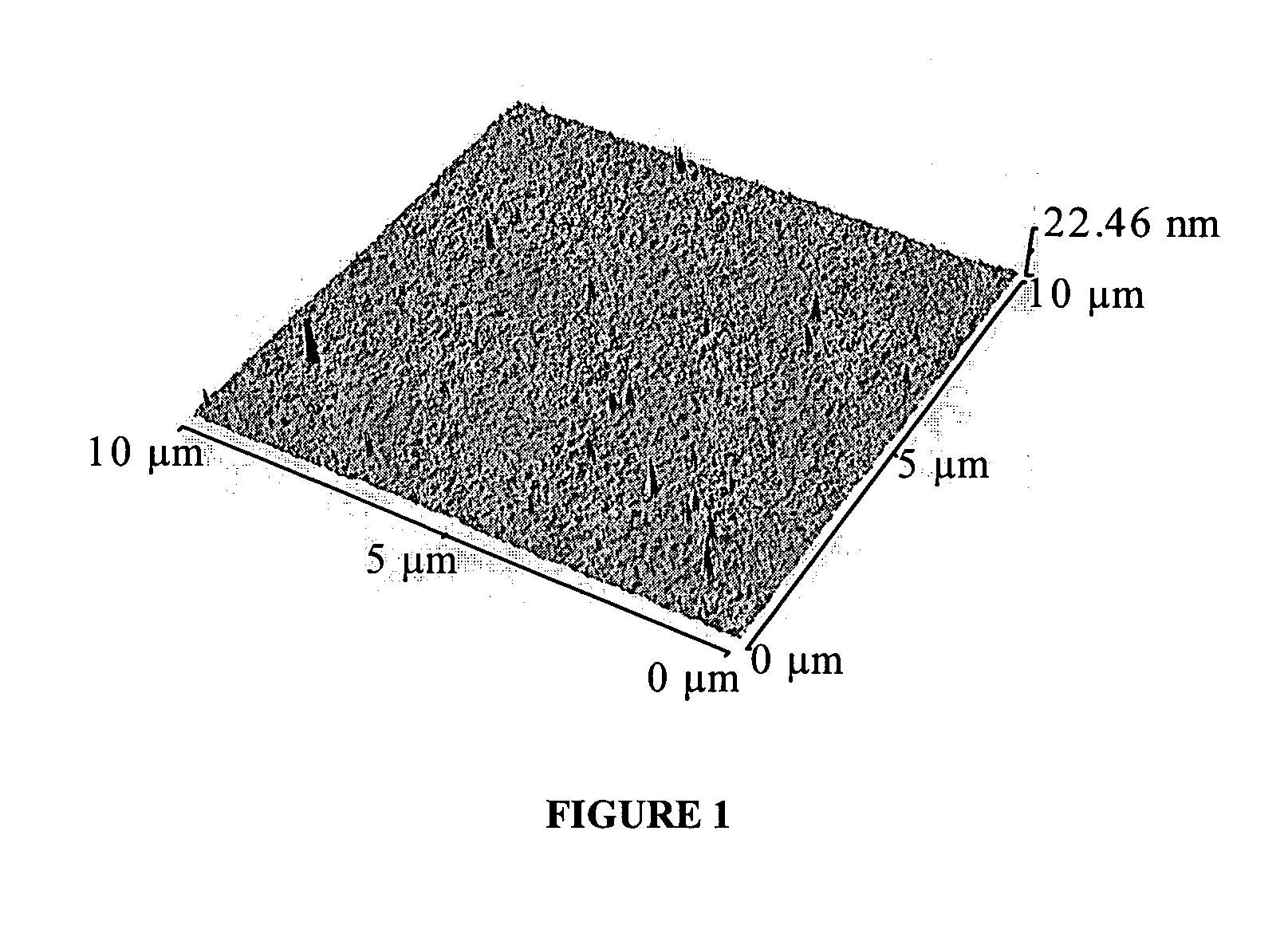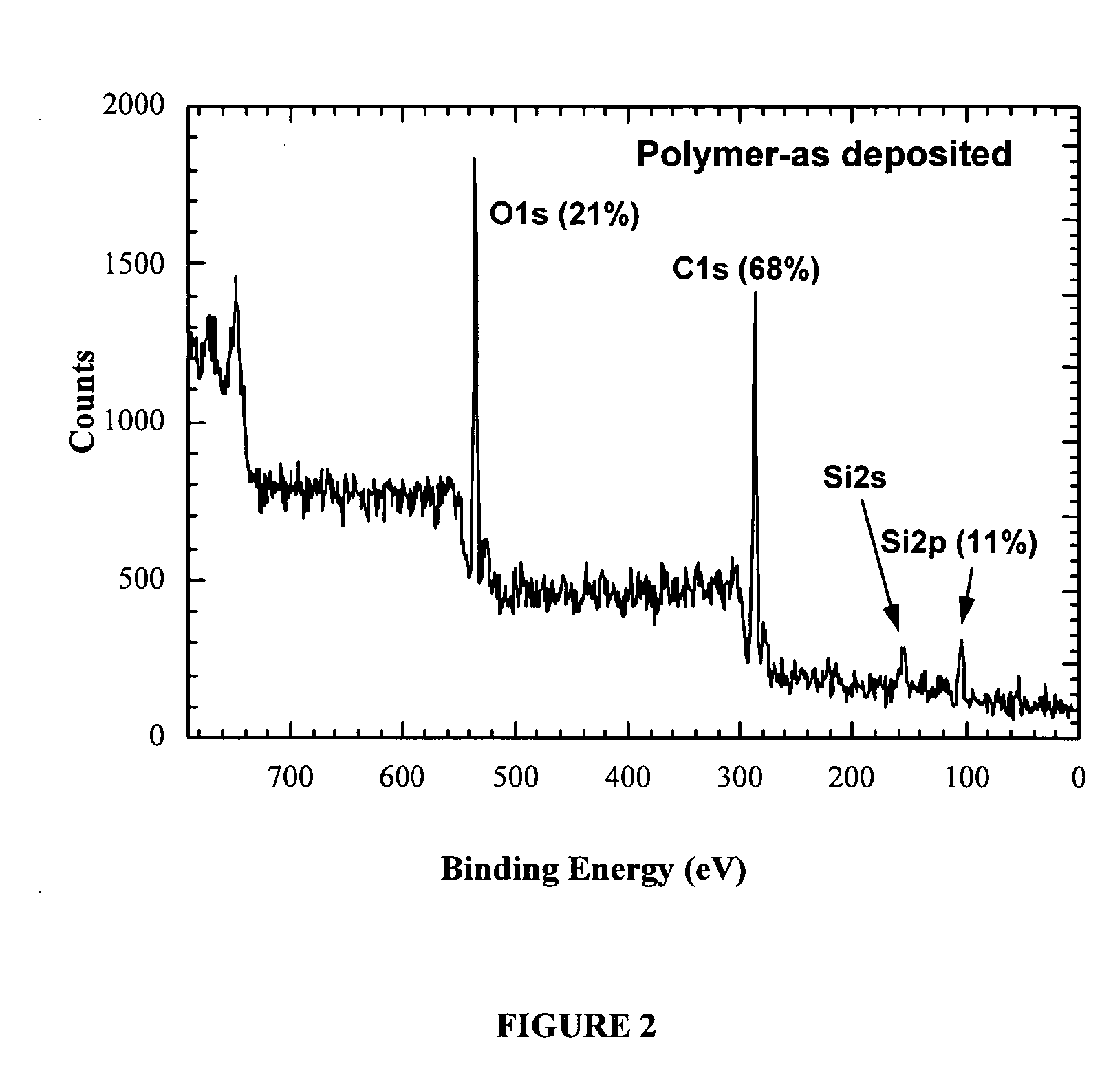Chemical treatment of material surfaces
a technology of chemical treatment and material surface, applied in the field of surface treatment, can solve the problems of wide spread of polymer adhesion problems, inability to naturally wettable, hydrophobic surface of cured polymer materials, and poor adhesion of polymer solutions to adjacent cured polymer surfaces, etc., to achieve the effect of reducing the contact angle of the surface, simple and inexpensive, and promoting the wettability of the surfa
- Summary
- Abstract
- Description
- Claims
- Application Information
AI Technical Summary
Benefits of technology
Problems solved by technology
Method used
Image
Examples
example 1
[0038] An N-type, 4-inch silicon wafer having a resistivity of 0-0.02 ohm-cm was used as the substrate. After standard RCA cleaning an adhesion promoter (HMDS) was spin-coated onto the wafer at 3000 rpm for 40 sec. The wafer was then annealed in air at 100° C. for 10 min. A siloxane epoxy prepolymer solution containing structure (IIB), wherein the ratio of p to q was about 2:1, was spin-coated onto the wafer at 3000 rpm for 100 sec to a thickness of 0.5 micron to form a first layer. The first polymeric film / wafer was baked under vacuum of 10−3 torr for 1 hour at 100° C. The film was then cured at 165° C. for 2 hours, followed by a thermal anneal at 250° C. under nitrogen gas flow for 1 hour to cross-link the polymer. The contact angle of the cured first polymer layer was measured to be 70°.
example 2
[0045] The procedure of Example 1 was followed, and a second prepolymer layer was spun onto the surface of the cured first polymer layer (3000 rpm for 100 sec to a thickness of 0.5 micron). The prepolymer deposited as the second layer was the same as that deposited as the first layer polymer described in Example 1. However, the first polymer layer surface dewetted during the spin on process of the second prepolymer layer, as shown in the left side of FIG. 4, described below.
example 3
[0051]FIG. 5 is a cross-sectional view of a portion 10 of a semiconductor structure fabricated using conventional damascene processing, wherein trenches (lines) and vias (holes) are etched into interlayer dielectric 30. Initially, a low-k prepolymer, such as parylene, is deposited by chemical vapor deposition (CVD) (and cured) to a thickness typically of up to 0.7 μm onto top surface 16 of semiconductor substrate 15 made of polysilicon, for example, to form first polymeric low-k interlayer dielectric 30. Via 20 is etched into first polymeric low-k interlayer dielectric 30. Ta-based liner 40, made of tantalum, TaN, or TaSiN, is conformally deposited onto sidewalls 21a and 21b and bottom 22 of via 20 (and any trenches, not shown), followed by deposition of copper 50 and planarization. Silicon-containing dielectric cap 60 made of SiN, SiC, SiCH, or SiCN is then deposited by CVD onto the top surfaces of copper line 50, Ta-based barrier 40 and low-k polymeric dielectric 30 to a thickness...
PUM
 Login to View More
Login to View More Abstract
Description
Claims
Application Information
 Login to View More
Login to View More - R&D
- Intellectual Property
- Life Sciences
- Materials
- Tech Scout
- Unparalleled Data Quality
- Higher Quality Content
- 60% Fewer Hallucinations
Browse by: Latest US Patents, China's latest patents, Technical Efficacy Thesaurus, Application Domain, Technology Topic, Popular Technical Reports.
© 2025 PatSnap. All rights reserved.Legal|Privacy policy|Modern Slavery Act Transparency Statement|Sitemap|About US| Contact US: help@patsnap.com



